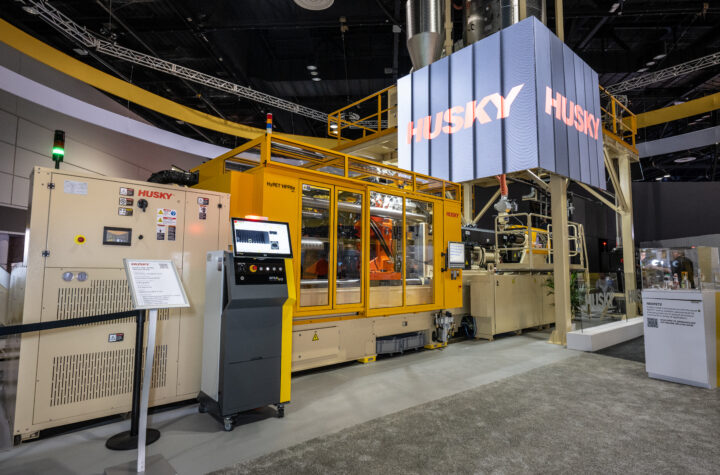Today’s top 10 myths that lead to bad auto supplier strategy. Believing in the tooth fairy is okay for kids, but for suppliers believing in myths is a dangerous way to run a business. While I doubt supplier executives are putting teeth or parts under their pillows and expecting to wake up to cash, many are failing to see results because of decisions based on myths. Facilitating strategic planning for auto suppliers has exposed several myths that ought to be debunked.
Believing in the tooth fairy is okay for kids, but for suppliers believing in myths is a dangerous way to run a business. While I doubt supplier executives are putting teeth or parts under their pillows and expecting to wake up to cash, many are failing to see results because of decisions based on myths. Facilitating strategic planning for auto suppliers has exposed several myths that ought to be debunked.
A very common misbelief is vehicle manufacturers want to save money. But the vehicle manufacturers aren’t engaging in money-saving behaviors, they are engaging in cost-cutting behaviors to spend less. Here is an analogy to illustrate the difference: If I wanted to save money on my groceries, I would clip coupons and plan ahead to buy items when they were on sale. I would prepare meals in bulk in advance and store them in my freezer. However, instead of engaging in upfront behaviors, my behaviors are to spend less at the grocery store. When I arrive, I set a spending limit and stop putting items in the cart when I reach it. I also make in-store trade-offs by buying lower-quality or fewerfeatures brands. Likewise, the vehicle manufacturers are not investing in long-term process changes in product development, manufacturing, equipment, or supplier relationships to save money. Instead, they are engaged in practices to cut costs now, such as reducing engineering headcount in product development, squeezing suppliers for givebacks and seeking supply from low-cost labor sources.
Failing to recognize the difference between “saving money” and “spending less” objectives could lead to poor strategic decisions by a supplier. Pitching cost savings ideas that require people or financial investments by the customer upfront to save money later is an uphill sell to domestic customers today. Faced with shrinking share, downward price pressures, and struggling profitability, domestic OEMs and Tier-1s alike are driven by metrics around cost reductions today. Without access to top executives, it is more than an uphill sell — it’s a waste of precious resources. Product designs that may reduce warranty or assembly time are long-shots if they increase piece cost or require changes to the product development process. Supplier concepts are more likely embraced by customers if they reduce piece price, tooling or freight costs immediately.
This is not the only myth that leaves suppliers wondering why their efforts didn’t get the expected results.
“Better customer service” is often cited as a differentiator. In reality, customer service focused on manufacturing plants or engineering matters very little when purchasing is measured by cost reductions. The real objective for the supplier is to reduce the number of competitors that the purchasing department can seriously consider. If restricting the players can be achieved through “customer service” that influences the specifications or shortens the time to market, then that serves as a real differentiator.
Many suppliers of commodity processes are desperate for work at any price to gain contribution margin. Significant sales and engineering resources are expended pursuing, tooling or re-tooling and launching low-margin work, only to find the company in banker work-out months later. While “contribution now” may be a necessary objective, expending some of those scarce technical resources on capturing the sales right for the company’s competencies will have more impact on continuing financial viability. The approach includes identifying core competencies, developing an attractive value proposition for the market, targeting customers that will pay for that value and developing actionable plans to capture targeted customers.
Seriously flawed is the supplier strategy to “just hang in there until the auto industry bounces back with volumes up again.” The reality is “the good ole days” aren’t coming back. The 2002 light vehicle production in North America was a record year of 16.4 million units. While 2003 is forecasted to be down by nearly 3 percent, production volume is forecasted to grow at a compound average rate of 1.7 percent per year for the next five years. North American vehicle production is already doing well. The rest of the story is that the North American production share held by General Motors, Ford, and DaimlerChrysler is forecasted to decline from nearly three-quarters to two-thirds during the same period. For suppliers not already part of the new domestic supply chain, it is past due to re-size for a smaller piece of the production volume pie or develop an achievable plan to take business from competitors.
North American production by new domestic manufacturers is forecasted to grow by 7 percent per year for the next five years. Their supply chain is the place to be to enjoy organic growth. Participating in this organic growth is typically a long-term process that won’t improve financial strength in the short- or mid-term. Even when a purchase order is won, operational excellence and operating discipline is expected to realize even modest margins. While pursuing business with the new domestics is a good longterm goal, it won’t be the answer for survival for a supplier today.
Ignoring China by assuming that manufacturers there are only capable of simple, lowtech manufacturing could be a fatal mistake. One only has to look at the “made in” label of consumer and automotive electronics to realize how sophisticated manufacturers in China have become. Better to assess the risk and prepare a plan to beat them or join them, than to be surprised as business is lost to a low global price.
As a strategic planner, I’m often called upon to help a supplier diversify out of automotive. Suppliers without any strategic leverage lament that the grass must be greener outside of the automotive industry. The alternatives are usually other high volume industries, for example the appliance industry that is every bit as price sensitive and as aggressive in offshore sourcing, or much lower volume industries that require a higher level of sales, marketing and distribution. If a supplier is a commodity manufacturer with little differentiation or value proposition in the automotive market, why would the company be in any better position in a different industry? It usually isn’t. So instead of expending resources to develop new customers and probably new systems only to still be a price-pressured commodity, expend resources to strategically differentiate and capture value with known customers and industry practices.
Many formerly Tier 1 suppliers, even those involved in the product design process or shipping components for the final assembly line, have been informed that the sourcing decision now rests with a system integrator. Now these suppliers have all new customers with which they must build relationships, demonstrate their capabilities and probably displace a preexisting Tier 2 supplier with an established relationship. The scenario is beginning to replay at the Tier 1 system integrators. Despite how logical the reason for a supplier’s present supply chain position, the supplier is better off to build relationships with other suppliers within the supply chain, lest sudden re-tiering leaves them without any customers.
Automotive suppliers often eliminate potential scenarios from a strategy analysis with the rationale “no rational company would do that — it just doesn’t make sense for our customer to do that,” only to be surprised when exactly that scenario happens. While it may seem on the surface irrational and even self-defeating for a customer to take a particular action, from the customer’s perspective it makes sense. Understanding first the customer representative’s personal performance metrics, personality, department priorities and management mandates among others, are required before “mental reason” can be applied to predict a customer action. Without that insight, a supplier can encounter fewer surprises by evaluating even seemingly irrational scenarios.
The last myth to debunk is that auto suppliers cannot be profitable. Plante & Moran surveys have consistently shown that 15 to 20 percent of the North American suppliers have achieved operating income twice the supplier industry average. While many contributing factors have been explored in these analyses, there is one consistent finding. Successful suppliers have a differentiated business model, and a structure and business processes focused on delivering a particular value to their selected customers. Building this business model first requires a data-based look at the company and the market without distortion from these popular myths.
Jason C. Brewer is a manager in the Automotive Supplier Consulting Services Practice of Plante & Moran, PLLC in Southfield, Michigan.














































 Supply and Demand
Supply and Demand



